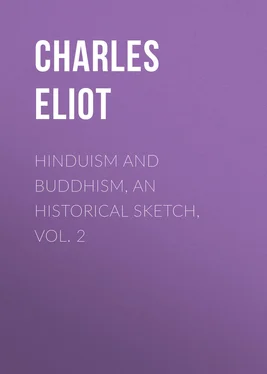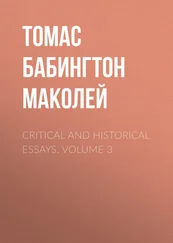Gotama, the founder of the Nyâya philosophy, also admitted the force of the arguments against the existence of present time but regarded them as a reductio ad absurdum . Shadworth Hodgson in his Philosophy of Reflection , vol. I. p. 253 also treats of the question.
The Sânkhya philosophy makes a similar statement, though for different reasons.
Vajracchedikâ. See S.B.E. vol. XLIX. It was translated into Chinese by Kumârajîva (384-417 A.D.).
Or in other repetitions of the same formula, beings, ideas, good things, signs, etc., etc.
Soyen Shaku, Sermons of a Buddhist Abbot , p. 47.
See for a simple and persuasive statement of these abstruse doctrines a charming little book called Wu-Wei by H. Borel.
Translated from the Chinese by Teitaro Suzuki, 1900. The translation must be used with care, as its frequent use of the word soul may lead to misunderstanding.
Asaṅga's work Mahâyâna-sûtrâlankâra (edited and translated by S. Lévi) which covers much of the same ground is extant in Sanskrit as well as in Chinese and Tibetan translations. It is a lucid and authoritative treatise but does not appear to have ever been popular, or to be read now in the Far East. For Yogâcâra see also Muséon , 1904, p. 370.
The discussion of tathatâ in Kathâvatthu, XIX. 5 seems to record an early phase of these speculations.
Awakening of Faith , Teitaro Suzuki, pp. 62 and 70.
The process is generally called Vâsana or perfuming.
Vijñânamâtra Śâstra. Chinese version quoted by Teitaro Suzuki, Outlines of Mahâyâna Buddhism , p. 343. Apparently both upâdhi and upadhi are used in Buddhist Sanskrit. Upâdi is the Pali form.
So the Mâdhyamika Śâstra (XXV. 19) states that there is no difference between Samsâra and Nirvâna. Cf. Rabindranath Tagore, Sadhana , pp. 160-164.
E.g. Bodhicaryâvatâra, chap. I, called praise of the Bodhicitta.
E.g. the Ṕu-t́i-hsin-li-hsiang-lun (Nanjio, 1304), translated from Nâgârjuna, and the Ta-Ch'êng-fa-chieh-wu-ch́a-pieh-lun, translated from Sthiramati (Nanjio, 1258).
In the Mahâyâna-sûtrâlankâra he quotes frequently from the Samyukta and Ekottara Âgamas, corresponding to the Samyutta and Anguttara Nikâyas of the Pali.
A reading Vaitulya has also been found in some manuscripts of the Lotus discovered at Kashgar and it is suggested that the word may refer to the sect of Vetullas or Vetulyakas mentioned in the Commentary on the Kathâvatthu as holding that the Buddha really remained in the Tushita heaven and sent a phantom to represent him in the world and that it was Ânanda, not the Buddha, who preached the law. See Kern, Vers. en Med. der K. Ak. v. Wetenschappen, Letterk. , R. 4 D. VIII. pp. 312-9, Amsterdam, 1907, and De la Vallée Poussin's notice of this article in J.R.A.S. 1907, pp. 434-6. But this interpretation does not seem very probable.
IV. 160. 5.
See Cullavagga, V. 33. The meaning evidently is that the Buddha's words are not to be enshrined in an artificial literary form which will prevent them from being popular.
Sûtrâlankâra, I. 2.
See Waddell, "The Dhâraṇî cult" in Ostasiat. Ztsft . 1912, pp. 155 ff.
Chap. XXI, which is however a later addition.
Dig. Nik. 32.
Watters, Yüan Chwang , II. p. 160.
The Mahâvyutpatti (65) gives a list of 105 sûtras.
The word pâram-itâ means as an adjective gone to the further shore or transcendent. As a feminine substantive it means a transcendent virtue or perfection.
See Walleser, Prajñâ-pâramitâ in Quellen der Religionsgeschichte , pp. 15 ff. S.B.E. XLIX. Nanjio, Catalogue Nos. 1-20 and Rajendralala Mitra's Nepalese Buddhist Literature , pp. 177 ff. Versions are mentioned consisting of 125,000 verses, 100,000 verses, 25,000 verses, 10,000 verses and 8,000 verses respectively. (Similarly at the beginning of the Mahâbhârata we are told that the Epic consists of 8,800 verses, of 24,000 and of 100,000.) Of these the last or Ashṭasâhasrikâ has been published in the Bibliotheca Indica and the second or Śatasâhasrikâ is in process of publication. It is in prose, so that the expression "verses" appears not to mean that the works are Gâthâs. A Khotanese version of the Vajracchedikâ is edited in Hoernle's Manuscript Remains by Sten Konow. The Sanskrit text was edited by Max Müller in Anecdota Oxoniensia.
The Sanskrit text has been edited by Kern and Nanjio in Bibliotheca Buddhica ; translated by Burnouf ( Le Lotus de la bonne Loi ), 1852 and by Kern (Saddharma-Puṇḍarîka) in S.B.E. vol. XXI.
There appears to have been an earlier Chinese version of 255 A.D. but it has been lost. See Nanjio, p. 390. One of the later Chinese versions alludes to the existence of two recensions (Nanjio, No. 139). See B.E.F.E.O. 1911, p. 453. Fragments of a shorter and apparently earlier recension of the Lotus have been discovered in E. Turkestan. See J.R.A.S. 1916, pp. 269-277.
Edited by Rajendralala Mitra in the Bibliotheca Indica and partially translated in the same series. A later critical edition by Lefmann, 1902-8.
The early Chinese translations seem doubtful. One said to have been made under the later Han has been lost. See Nanjio, No. 159.
See Burnouf, Introduction , pp. 458 ff. and J.R.A.S. 1905, pp. 831 ff. Rajendralala Mitra, Nepalese Buddhist Literature , p. 113. A brief analysis is given in J.A.S.B. June, 1905 according to which the sûtra professes to be the work of a human author, Jina of the clan of Kâtyâyana born at Campâ. An edition of the Sanskrit text published by the Buddhist Text Society is cited but I have not seen it. Chinese translations were made in 443 and 515 but the first is incomplete and does not correspond with our Sanskrit text.
Abstract by Rajendralala Mitra, Nepalese Buddhist Lit. p. 241.
See Nanjio, No. 127 and F.W.K. Muller in Abhandl. der K. Preuss. Akad. der Wissenschaften , 1908. The Uigur text is published in Bibliotheca Buddhica , 1914. Fragments of the Sanskrit text have also been found in Turkestan.
Abstract by Raj. Mitra, Nepalese Buddhist Lit. pp. 90 ff. The Śikshâsamuccaya cites the Gaṇḍa-vyûha several times and does not mention the Avataṃsaka.
The statement was first made on the authority of Takakusu quoted by Winternitz in Ges. Ind. Lit . II. i. p. 242. Watanabe in J.R.A.S. 1911, 663 makes an equally definite statement as to the identity of the two works. The identity is confirmed by Pelliot in J.A. 1914, II. pp. 118-121.
Читать дальше












